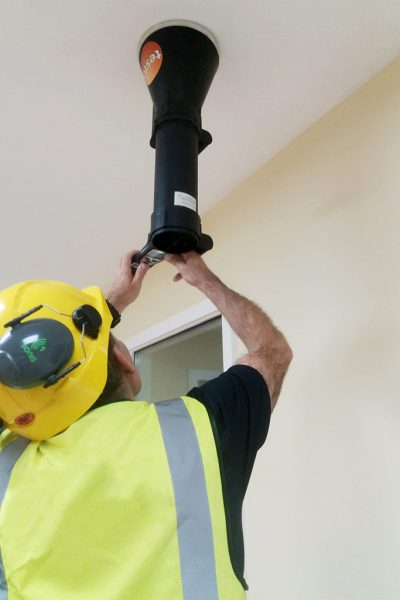VENTILATION VALIDATION
NSAI has established a registration scheme that certifies an individual as a competent independent third party to validate that a ventilation system has been installed, balanced and commissioned to meet the minimum requirements of Technical Guidance Document (TGD) F - Ventilation (2019) to the Irish Building Regulations.
Checks and measurement methods broadly follow the guidance given in I.S. EN 14134: 2019: Ventilation for buildings – Performance testing and installation checks of residential ventilation systems. Ventilations systems must be designed and commissioned to provide adequate and effective means of ventilation to satisfy the minimum requirements of F1 of TGD to Part F of the Irish Building Regulations.
WHAT ARE THE BENEFITS?
The benefits of ventilation validation for customers are extensive. Benefits such as greater energy efficiency of the home and better indoor air quality, which improves the comfort and health of the occupants. At the time of validation, homeowners can be confident that the ventilation system installed in their home provides the minimum ventilation rates required under TGD of Part F – Ventilation (2019) of the Building Regulations.
As a result, home owners can be reassured that best practice has been achieved to:
(a) Limit the moisture content of the air within the building so that it does not contribute to condensation and mould growth, and
(b) Restrict the concentration of harmful pollutants in the air within the building.
Homeowners are reminded that only qualified installers are permitted to make changes to ventilation systems.
Clause 1.2.1.2 of TGD to Part F – Ventilation (2019) of the Building Regulations requires that provision should be made to facilitate transfer of air and cross ventilation between rooms, e.g. a 10 mm gap should be provided under doors.
Ventilation systems will require regular maintenance to clean filters and establish that equipment is operating correctly.

WHAT DOES THE SCHEME INVOLVE?
Under the scheme, NSAI inspectors assess the operations and procedures of the Ventilation validator. NSAI inspectors witness a ventilation check and will review the accuracy of the applicant’s assessment of the as presented ventilation design for the same dwelling. Individuals who wish to apply to registered as a NSAI certified Ventilation validator will need to demonstrate the following competencies.
• The applicant will be required to demonstrate that they are familiar with a range of ventilation systems/approaches that they are likely to encounter in dwellings. Typical systems and approaches are described in TGD to Part F - Ventilation (2019) of the Building Regulations and Section 4 of the NSAI “Ventilation Validation Registration Scheme Master Document”. • The applicant can establish that the presented ventilation design provides for the minimum ventilation requirements as described in TGD to Part F - Ventilation (2019) of the Building Regulations. • The applicant will need to present a valid annual calibration certificates for all measuring instrument. • The applicant will need to pass an air flow proficiency test. See clause 8.3 of the NSAI “Ventilation Validation Registration Scheme Master Document”. • The applicant will need to demonstrate that they can correctly configure the dwelling prior to measuring the flow rate in the ventilation system. • The applicant retains adequate documentary evidence when carrying out a validation check. • The applicant has an adequate template to issue third party “Ventilation validation Certificates”.
